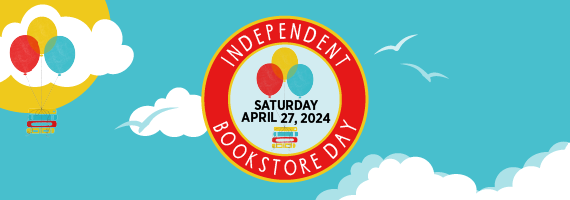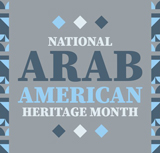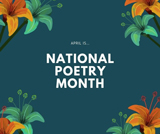Portland author Ellen Notbohm interviewed Brittney Corrigan about her fifth poetry collection, Solastalgia (2023, JackLeg Press). Corrigan’s poetry and short stories have appeared in more than 100 literary journals including Watershed Review’s 10th Anniversary issue and other publications including Scientific American’s Science in Meter and Verse column. She appears frequently at poetry readings around the Northwest.
EN: The word “solastalgia” will be new to many readers. Several people have asked me if it’s a real word or if it’s a play on the word “nostalgia.” Tell us what “solastalgia” means and how you came to choose it as the title of this collection.
BC: “Solastalgia” is a neologism coined by the philosopher Glenn Albrecht in 2005 and formed by combining the Latin word sōlācium (comfort) and the Greek root -algia (pain, suffering, grief). The word describes a form of emotional or existential distress caused by environmental change, or a kind of homesickness for the home you are currently in. It’s come to refer specifically to the ecoanxiety caused by the current climate crisis. I chose this title for the collection since the poems explore topics of climate change, extinction, and the Anthropocene age and how we as humans, and myself specifically, are dealing with these challenges.
EN: When we met (sixteen years ago!) and became critique partners, I didn’t feel comfortable critiquing your work, as I knew nothing about poetry. Your answer was that you didn’t want to only appeal to poets, you wanted to touch to a wide range of readers. Who do you hope to reach with Solastalgia?
BC: The poems in Solastalgia are definitely not just for other poets or lovers of poetry. I hope that these poems will speak to anyone who is concerned about the state of our planet and the nonhuman beings with whom we share it. I hope readers can see themselves within these poems—be it a wonder for the natural world or a fear of its demise—and are inspired to take action in whatever way they can to help undo as much of the damage we’ve done as we possibly can before it’s too late.
EN: So often when I talk about your books, people will say that they don’t read poetry because they don’t “get” it. They resist taking a chance on reading something they think they won’t understand. How can we talk about poetry in a way that encourages reluctant readers to take that chance?
 BC: This is certainly a common response to poetry, and I sometimes wonder if it’s because the only poetry some folks have had contact with was in school, and perhaps they were asked to dissect or explain a poem before they’d had a chance to just read it for pleasure. Or perhaps they’ve only read poetry by dead white men (not to say there isn’t value in those poems, too) and haven’t been exposed to the other shapes poetry can take. Contemporary poets are doing exciting work with subject matter, form, and performance, and I urge folks to come to poetry with an open mind. If we approach anything with the mindset that we can’t understand it, then surely we won’t understand it. But if we approach a poem with willingness to listen as well as curiosity, we’re set up to be pleasantly surprised by what we might find, and then we can enter into a deeper conversation with the work.
BC: This is certainly a common response to poetry, and I sometimes wonder if it’s because the only poetry some folks have had contact with was in school, and perhaps they were asked to dissect or explain a poem before they’d had a chance to just read it for pleasure. Or perhaps they’ve only read poetry by dead white men (not to say there isn’t value in those poems, too) and haven’t been exposed to the other shapes poetry can take. Contemporary poets are doing exciting work with subject matter, form, and performance, and I urge folks to come to poetry with an open mind. If we approach anything with the mindset that we can’t understand it, then surely we won’t understand it. But if we approach a poem with willingness to listen as well as curiosity, we’re set up to be pleasantly surprised by what we might find, and then we can enter into a deeper conversation with the work.
EN: Which poems in Solastalgia [and/or your 2021 collection, Daughters] might be good introductions to readers new to poetry?
BC: The “Anthropocene Blessings” in Solastalgia that are written for a variety of endangered species may appeal to new readers, as hopefully they may know some of these beings and want to celebrate them, as well. There are also poems in Solastalgia with a bit of a pop culture feel—such as “The Ghost of Marlin Perkins Visits Me Wearing a Copperhead” or “Tweet”—that folks may enjoy. I also hope readers can identify with poems in which I, the writer, relate my own personal experiences, such as “Fossil Record: Smilodon” or “Rabbit, Rabbit, Rabbit.” With Daughters, I invite folks to peruse the table of contents and find the daughter who most appeals to them in terms of a story they know or have heard of or a profession they can relate to, and start there.
 EN: The poems in Solastalgia range from desolate to hope-filled. Why and how did you craft such a balance? How do you decide the order in which poems appear in a collection?
EN: The poems in Solastalgia range from desolate to hope-filled. Why and how did you craft such a balance? How do you decide the order in which poems appear in a collection?
BC: In putting these poems out into the world, two things were important to me. First, I think we need to sit with the darkness for a while. We need to meditate on the damage we as humans have caused, and we need to take responsibility for that damage. We need to feel sorrow, maybe even a bit of despair. But then we need to do something with those feelings. And so the collection is also threaded with wonder and hope. Because I have to believe that, while we can’t fix everything, we are fully capable of doing something to make things better. The poems are arranged in sections that mirror the spheres of the planet: biosphere, lithosphere, atmosphere, hydrosphere/cryosphere, and there is a mix of types of poems within each section. But quite intentionally, the final two poems in the collection are hopeful. And that’s how I want folks come away from Solastalgia feeling, and thinking: What’s next? However small, what am I personally going to do to create change?
EN: Solastalgia tells a story. You’re a short story writer as well as a poet. How is storytelling different in poetry than in prose?
BC: I often am exploring the same subject matter in both my poetry and prose. For me, a poem is a snapshot, as I don’t tend to write long poems. In a poem, I work to communicate a concept with a small amount of words and rely heavily on imagery, metaphor, and the appearance of the text on the page. Short stories allow me to expand on those same ideas with characters, dialogue, description, and a lot more words. But I don’t think the two forms are mutually exclusive. Any of these tools can be present in both poetry and fiction. And I find that the kind of fiction I write is created with a poet’s sensibility and ear. But I do find it to be a very enjoyable challenge to write about the same topic in two different genres, especially when it allows me to do a lot of research, which I love.
For instance, I have a small obsession with the Svalbard Global Seed Vault in Norway. The poem “Vaulted Seeds” in Solastalgia is about this facility, and it focuses primarily on the seeds themselves and the landscape and wildlife of Svalbard. But I also wrote a short story about this seedbank called “The Vault.” It is written as a series of short, prose-poem-like vignettes that alternate between the point of views of the last polar bear on Earth and one of the last remaining humans. For me, writing that story expanding on my interest in the seed vault allowed me to approach its importance and symbolism in a very different way than I had done with the poem, even though readers will notice some similarities between the two pieces. The poem hints at a possible apocalypse, and the story actually takes the reader there.
EN: Your 2021 collection Daughters (Airlie Press) reimagines characters from mythology, folklore, fairy tales, and pop culture—the Pied Piper, Bigfoot, Medusa, Dorothy Gale, and an alien abductee, to name a few—from the perspective of their daughters. The perspectives are startling, sometimes shocking commentary on social issues that have always dogged the human condition. Some of the poems have climate or meteorological perspectives. How did Daughters lead to Solastalgia?
BC: Daughters was definitely a project book, an opportunity for me to revisit the persona form I had loved in college and as a young writer. It took me five years to write, wedged in between work and raising children. As I was coming to the end of that collection (I had set myself a goal/limit of 50 daughters), I was feeling like what I wanted to write about next were issues of climate change and extinction. I’ve always had an affinity for the natural world and animals, since I was a kid, and the state of our planet was calling me back to those loves in the form of my artistic expression. The very last poem in Daughters is “Yeti’s Daughter,” which is about the human impact on the planet and the beings who live here with us. It was my “gateway poem” into the writing of Solastalgia.
EN: What would you like readers to know that I haven’t asked?
BC: I think of many of the poems in Solastalgia as falling into a few categories. There are the “world without us” poems, like “The Strip Mall Changes Its Mind,” in which I imagine nature thriving without human influence. There are the “parallel life” poems, such as “Triolet for the Marine Biologist I Didn’t Become,” which allow me to explore other possible paths my career might have taken that are rooted in the natural world. I am especially fond of the “unloved animal” poems, which gave me a chance to celebrate (and hopefully change readers’ minds about) creatures such as opossums and coyotes, with whom we often share our urban landscape. The “Fossil Record” poems examine my own life experiences in the context of the issues I’m writing about. And then, of course, there are the “Anthropocene Blessings,” which bring attention to both the beauty and plight of some of our most threatened species. What I hope this variety of poems does is allow any reader to find themselves in this collection, and to find something that resonates with them and speaks to them. Something, as my editor Simone Muench at JackLeg Press says, that make readers “…want to be better, do better.”
Ellen Notbohm’s novel, The River by Starlight, was featured in Conversations for nwbooklovers.org and reviewed by PNBA Executive Director Brian Juenemann in the Brian Juenemann in the Eugene Register-Guard: “. . . as rich in theme and detail as the Montana sky is in stars. Historical frontier fiction, romance, women’s rights, mental health — all these pieces make for a quilt of impressive design.” Notbohm’s nonfiction books have been published worldwide in more than 25 languages.




